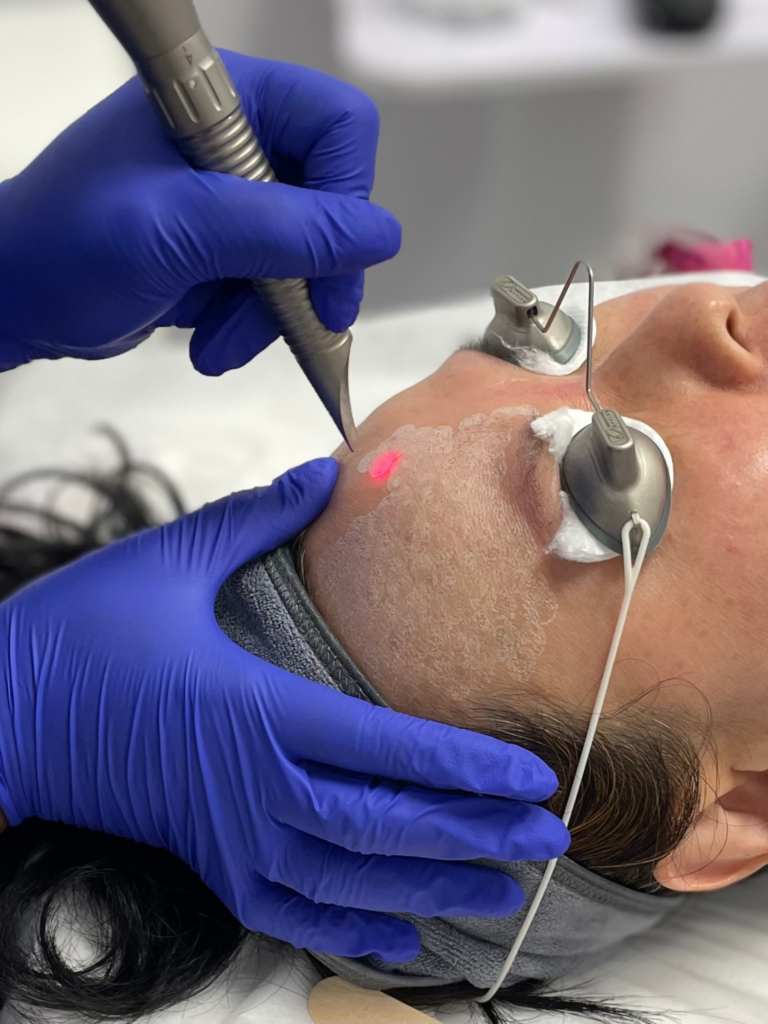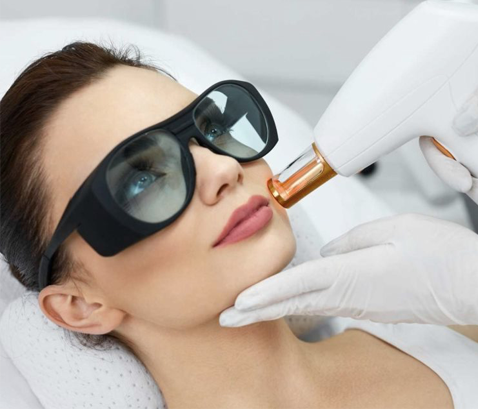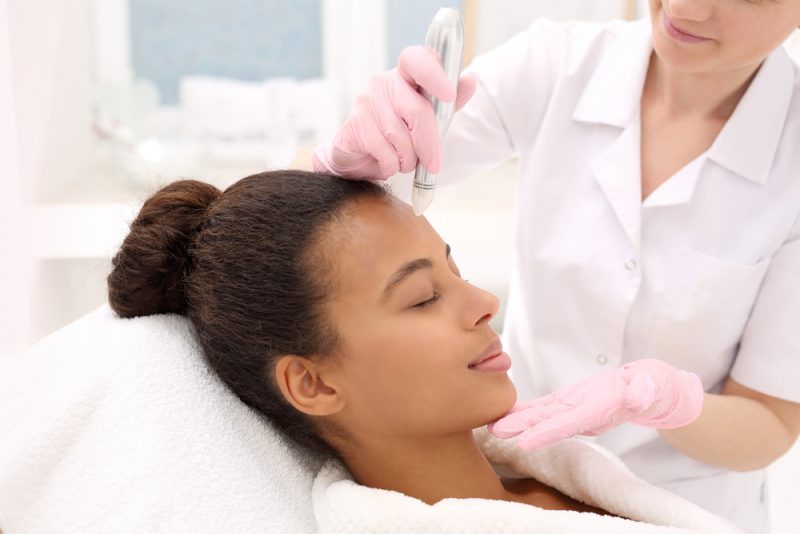Laser resurfacing
laser resurfacing
Laser Resurfacing for Wrinkles
what is a laser peel or laser resurfacing?
Laser resurfacing is a procedure used to improve the appearance of skin by addressing various skin issues such as wrinkles, scars, age spots, and uneven skin texture. It involves the use of a high-intensity laser beam to precisely remove the outer layers of the skin, prompting the growth of new, healthier skin cells in its place.
There are two main types of laser resurfacing: ablative and non-ablative.
Ablative Laser resurfacing
This method involves the removal of thin layers of skin using an intense laser beam. The laser vaporizes the targeted skin cells, which prompts the body’s natural healing processes. As the skin heals, it becomes smoother, tighter, and more youthful-looking. Ablative laser resurfacing is particularly effective for addressing deeper wrinkles, scars, and sun-damaged skin. However, it typically requires a longer recovery period compared to non-ablative methods.
After an ablative laser resurfacing procedure, the treated area will appear red, swollen, and possibly crusty as the skin heals. Recovery times vary based on the depth of the treatment and the individual’s healing capacity. It is important to follow and adhere to the post-treatment instructions and after care for ablative laser in order to achieve great results and avoid unwanted complications such as infection, hyperpigmentation and scarring.
Non-ablative laser resurfacing
This approach uses lasers with lower energy levels that penetrate the skin without causing visible damage to the outer layers. Instead, they heat up the underlying skin tissues, stimulating collagen production and tightening the skin over time. Non-ablative laser resurfacing is less invasive and involves shorter recovery times compared to ablative methods. It’s often used for addressing milder signs of aging, fine lines, and mild skin texture issues and can be used to address deeper lines over time when little to no down time is desired.
Ablative Laser resurfacing after care
Keep the Treated Area Clean: Gently cleanse the treated area with a mild, fragrance-free cleanser recommended by your medical professional. Avoid scrubbing or rubbing the area vigorously, as the skin will be sensitive.
Apply Recommended Ointments or Moisturizers: You will be prescribed or recommend specific ointments or moisturizers to promote healing and soothe the skin. Follow their instructions on how frequently to apply these products.
Protect the Treated Skin from Sun Exposure: Protect the treated area from direct sun exposure for several weeks, as it will be more susceptible to damage and pigmentation changes. If you need to be outdoors, wear a wide-brimmed hat and use a broad-spectrum sunscreen with a high SPF, even on cloudy days.
Avoid Picking or Peeling: Do not pick, scratch, or peel at any scabs, crusts, or flaking skin that develops. Let them fall off naturally to avoid potential scarring or complications.
Stay Hydrated: Drink plenty of water to keep your body and skin hydrated, which can aid in the healing process.
Limit Physical Activity: For the first few days after the procedure, it’s advisable to avoid strenuous physical activities that could cause sweating and irritation to the treated area.
Follow Medication Instructions: If you are prescribed any medications such as antibiotics or antiviral drugs, take them as directed to prevent infection and promote healing.
Avoid Makeup: Refrain from applying makeup to the treated area until your doctor gives you the green light. Makeup can irritate the healing skin and potentially introduce bacteria.
Use Gentle Skincare: Once you’re cleared to resume your regular skincare routine, opt for gentle products that do not contain harsh ingredients, fragrances, or exfoliants. Gradually reintroduce any active ingredients as advised by your doctor.
Attend Follow-Up Appointments: Attend all scheduled follow-up appointments with your medical professional. They can monitor your healing progress, address any concerns, and make adjustments to your aftercare routine if necessary.
Be Patient: Healing times can vary based on the depth of the treatment. Be patient and give your skin the time it needs to recover fully. It’s normal for redness and swelling to gradually subside over several weeks.
what can I expect after a Laser peel for wrinkles and skin tightening?
Downtime from Laser peel or resurfacing depends on the depth of the peel, condition of the skin, and aftercare. Some swelling, tenderness and crusting can be expected. Tylenol is okay if needed the first few days. Generally, NSAIDS, such as Ibuprofen should be avoided unless specifically advised by your health care professional and laser expert. Staying hydrated by drinking plenty of fluids and suing vaseline or aquaphor helps.


